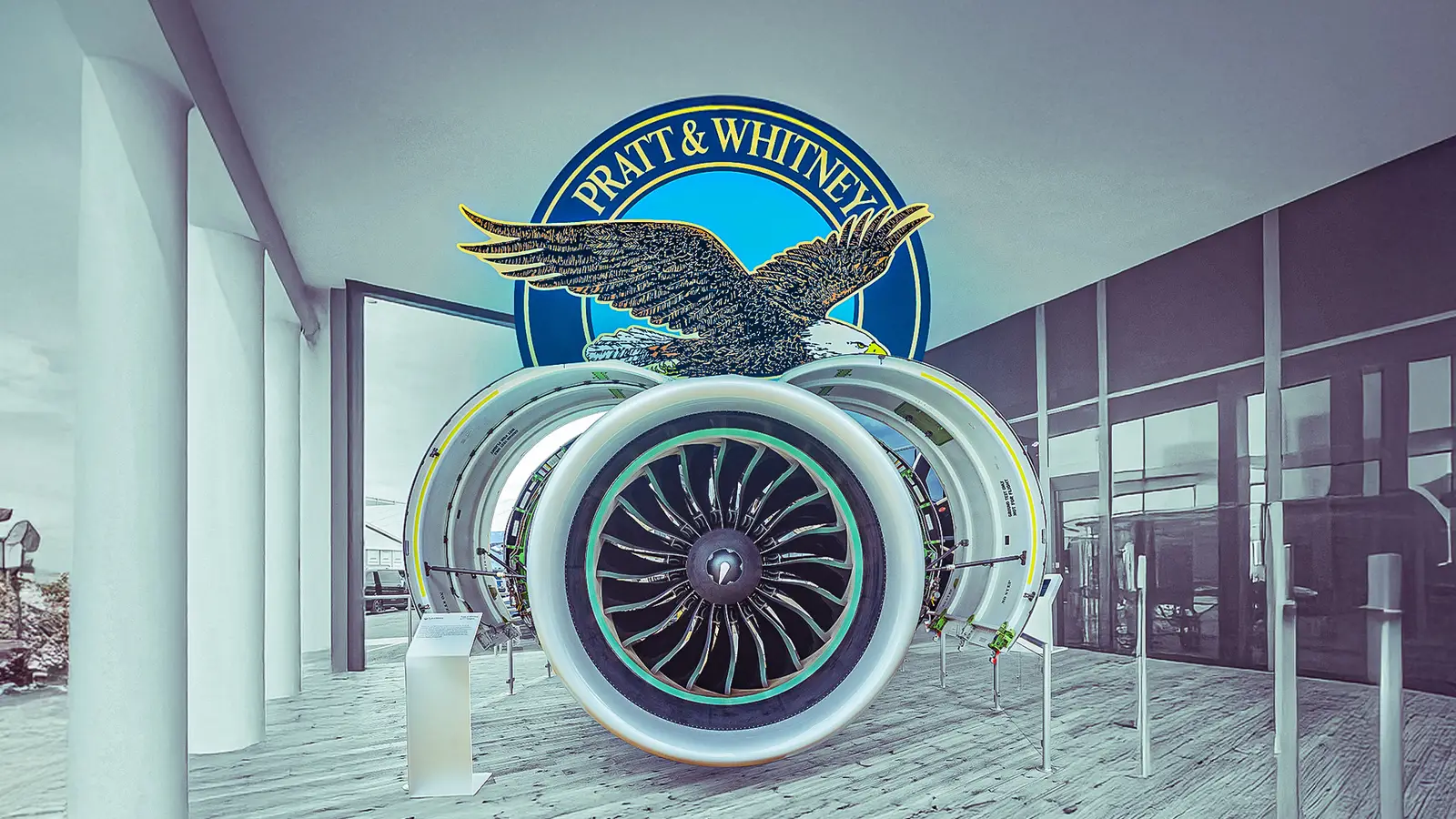
From the outside, when mounted on a commercial jetliner and covered in a cowling, it can be hard to tell the differences between any of the modern turbofan engines that they use. Two of the largest aircraft engine manufacturers in the worldwide commercial aviation industry are Rolls-Royce and Pratt & Whitney. Rolls-Royce manufactures the famous Trent engine family, used on a wide range of widebody aircraft, such as the Airbus A330neo and A350, and also the Boeing 787 and 777 in the past.
Meanwhile, Pratt & Whitney is a major US engine maker with a portfolio ranging from the highly successful PT6 turboprops to large civil and military high-bypass turbofans. A recent popular example of the latter is the PW1000G, which powers narrowbody aircraft like the Airbus A320neo and A220. These two prominent engine types were not only built differently, with different design philosophies, but also perform differently, making them suitable for different aircraft, and this article expands on these differences.
Main Design Differences
The Rolls-Royce Trent family of engines uses a three-shaft architecture, with high, intermediate, and low-pressure spools. This layout allows designers more degrees of freedom to optimize compressor and turbine stages independently, allowing them each to rotate more closely to optimal speed for low noise levels and low exhaust emissions. According to comments on PPRuNe, the three-spool design lends itself well to widebody aircraft operators, for which long-range efficiency is of greatest concern:
“For large commercial aircraft engines fuel efficiency will always be a primary concern. History has shown that the long term trend is for fuel costs to increase. More fuel efficient engines reduce the economic impact of fuel price fluctuations on the operator. Another thing to consider are the much tighter emissions regulations being implemented for CO2, NOx, etc. […] The higher cost from using more complex engine systems to get better efficiency is almost always a good bargain for large commercial aircraft engines.”
Pratt & Whitney uses a more common two-shaft turbofan architecture, where the fan is driven through a reduction gearbox, which allows it to spin slower, while the low-pressure turbine spins faster at its optimal speed. This enables a very large bypass ratio in a more compact engine, making the design ideal for single-aisle aircraft, which have size constraints on overall engine diameter due to sitting lower off the ground. The integration of a gearbox is a major mechanical innovation compared with conventional direct-drive turbofans.
In general, the two designs both have their advantages. According to Flying Academy, triple-spool engines can spin turbines closer to optimum speeds, are generally more fuel-efficient, and (in theory) are easier to start, as only one spool must be turned by the starter. However, the added complexity of the third shaft increases manufacturing and maintenance costs, and the added weight may not make it suitable for all planes. Double-spool engines, on the other hand, are lighter, simpler and have lower manufacturing and maintenance costs.
More On Triple Versus Double-Spool
When it comes to the triple-spool versus double-spool comparison, some differences emerge, thanks to the different shapes and components of the engines. The Pratt & Whitney geared turbofan (GTF) engines achieve very high bypass ratios for their class, being proportionally larger than triple-spool engines. GTF engines also deliver double-digit percentage improvements in specific fuel consumption compared with previous-generation narrowbody engines, according to Pratt & Whitney.
While the gearbox is a complex piece of equipment, and its addition presents additional design, maintenance, and inspection requirements, triple-spool engines also add complexity, as the three independent rotating assemblies and associated bearings require more seals and control logic systems. There also may have been more triple-spool engine designs in use, if Rolls-Royce had not patented the triple-spool turbofan engine concept.
Despite the complexity of the gearbox, Pratt & Whitney GTF engines are some of the quietest available, and the PW1900G engine was used to build the quietest jet in the world, the Embraer E2. The engines were so large for the plane that the aircraft was designed with a gull-wing to accommodate them. According to Luis Carlos Affonso, Senior Vice President of Engineering, Technology and Corporate Strategy at Embraer:
“They are efficient because, with such a big fan, the engine pushes the air backward at lower speeds. You have a higher mass of air at lower speeds, so you have less friction against the air that is not moving. And this friction is what causes the noise.”
Which Produces The Most Powerful Engine?
Both companies serve different segments of the commercial jetliner market, with Rolls-Royce producing engines exclusively for widebody aircraft and Pratt & Whitney producing engines for both narrowbody and widebody aircraft. Despite Rolls-Royce being focused on high-thrust turbofans for long-haul, twin-aisle jets, the most powerful engine either manufacturer has produced is the Pratt & Whitney PW4098, which was used on the Boeing 747, 767, MD-11, and Airbus A300.
The PW4000 family of engines the PW4098 comes from is also the second most powerful commercial jetliner engine type in the world, producing up to 99,040 pounds of thrust, according to an Aerospace Engineering Facebook group post. The only turbofan more powerful is the General Electric GE90, which produces 115,000 pounds of thrust, used on the Boeing 777-300ER, 777-200LR, and 777F.
In a few years, the most powerful commercial aircraft engine in the world will be the General Electric GE9X, which will be equipped on the upcoming Boeing 777X. While the engine is built for a thrust rating of around 134,000 pounds, it will be certified for a rating of 110,000 pounds of thrust at takeoff.
Where The Manufacturers Stand In The Industry
Rolls-Royce and Pratt & Whitney are some of the biggest commercial jet engine manufacturers in the world, but there is not much competition out there, and neither manufacturer is the biggest. The number one spot in the industry goes to General Electric, according to Statista in 2020. General Electric and French engine maker Safran came together to form the joint venture called CFM International. When including CFM products, GE leads the aircraft engine market globally, capturing 55% of market share, with 39% CFM products and 16% purely GE products.
The number two spot in the market goes to Pratt & Whitney, which holds a 26% share of the engine market, and Rolls-Royce comes in at number three, with 18% of the engine market share. This distribution reflects the popularity of the narrowbody aircraft in the passenger aviation market, as both CFM and Pratt & Whitney serve the market. Meanwhile, the larger widebodies served by Rolls-Royce have fallen slightly out of favor in recent years.
As seen above, the distribution has slightly changed in the last five years. According to more recent Statista data presented by Aerotime, Pratt & Whitney has surged ahead, rivaling CFM for the largest portion of market share. The distribution is even further slanted towards narrowbody aircraft, representing a decline in hub-to-hub travel and the widebodies that excel in creating value on such routes. Instead, point-to-point travel using more efficient, smaller, and lighter narrowbodies has really taken off.
Both Manufacturers Have Big Things Coming
Both manufacturers have interesting things in the works, which look to make waves in the industry for different reasons. Rolls-Royce has entered the final build stage of the upcoming UltraFan, which will be a geared triple-spooled engine with narrowbody and widebody configurations, allowing Rolls-Royce to compete with Pratt & Whitney’s GTF series for the single-aisle aero engine market. The UltraFan promises to be 25% more efficient than the first-generation Trent engines, offering 40% less NOx and 35% less noise at cruise.
The engine will also keep emissions lobbies happy, being ready to run on 100% Sustainable Aviation Fuel (SAF) from day one of service. Both manufacturers are also investigating hybrid-electric and hydrogen propulsion concepts. According to AIN, Pratt & Whitney, is working on a hybrid-electric technology demonstrator as part of the RTX technology group, aiming to start flight testing early next year in Canada. Frank Preli, the US group’s vice president for advanced propulsion and materials technologies, explained:
“We are talking about achieving five percent of the thrust capability using electric motors on each of the engines. This will enable us to alter the cycle by taking energy from one or both [of the electric motors or generators], which gives us very interesting capabilities so that we don’t have to completely rely on aerodynamic or thermodynamic cycles. The electric power can be used for taxiing, for instance, and to manage surge margins in the engine as you can separately change the high compressor and low compressor rotational speeds using the two motor generators.”
The Pratt & Whitney demonstrator combines a 1-megawatt electric motor, developed by sister company Collins, with a 1-megawatt engine to achieve a 30% improvement in energy performance on a mission basis, and the manufacturer announced the development of a mobile charging unit to support the 1,500-volt batteries used for the project. With all these things set to enter the market soon, the commercial aero engine industry is in for a shake-up, and these two manufacturers are leading the charge on sustainable passenger flight.



